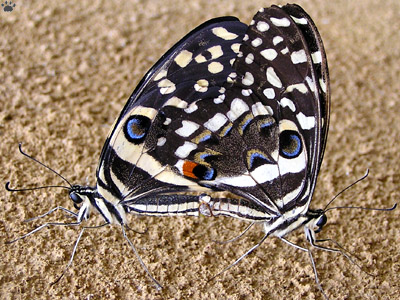
Mating citrus swallowtails (Papilio demodocus), Tana River Primate Sanctuary, Kenya.
East Africa - Part 4. Assorted Photos
One nice thing about travelling in Africa is that you can encounter something interesting at any moment. Forests, grasslands, and deserts are packed with interesting plants and animals, but even in agricaltural areas, villages and towns you occasionally run into unexpected things.Here are a few random photos - some from remote wilderness, others from much more accessible places.
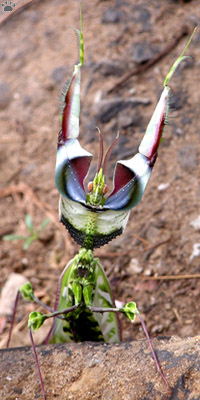
This praying mantis (left) was sitting on a metal
barrier controlling Kenya-Tanzania border on
Mombassa-Dar es Salaam Highway. I am not
making it up, I swear. |
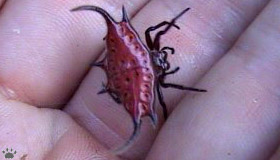
Buffalo spider, Gede Ruins, Kenya. |

These lovebirds belong to a hybrid population
(Agapornis fischeri X A. personatus) existing
in Kenyan Rift Valley. (I think the parent forms
are actually cospecific). Lake Naivasha, Kenya. |
|
One reason rural habitats of Africa have so many animals is that they are somewhat similar to native savanna, with its high biodiversity. In forest regions, transition to rural landscape is more difficult for native species. |
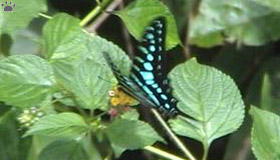
Common swordtail (Graphium polycenes), Murchison Falls, Uganda. |
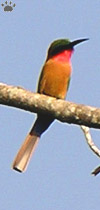
Red-throated bee-eater
(Merops bulocki),
Murchison Falls. |
Savannas, grasslands and other open spaces of Africa have unusual variety of bright-colored birds. You don't see anything like it on other continents. I don't know what's the cause of such difference, but it certainly makes roadside birdwatching very exciting.
|
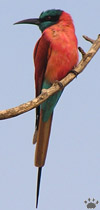
Carmine bee-eater
(M. nubicus),
Murchison Falls. |
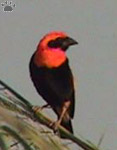 |
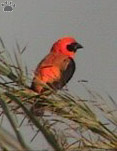 |
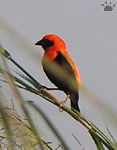 |
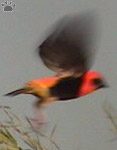 |
| Southern red bishop (Euplectes orix), Mwanza, Tanzania.
|
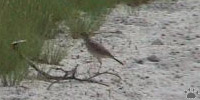
Malindi pipit, Madi Creek, Kenya. |
Of course, most grassland and desert species have cryptic coloration, like very rare and local Malindi pipit (Anthus melindae), which only breeds in seasonally flooded shortgrass lowlands of coastal Kenya. |
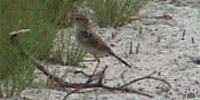
Malindi pipit, Madi Creek, Kenya. |
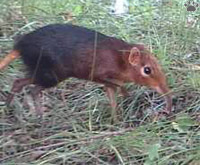 |
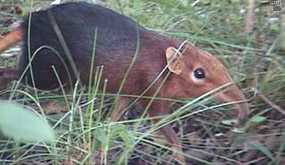 |
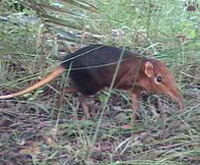 |
| Black-backed elephant shrew (Rhynchocyon petersi), Jozani Forest National Park, Tanzania. |
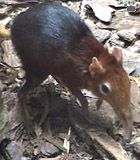 |
 |
These two species of elephant shrews are also endemic to coastal East Africa - one to eastern Tanzania, the other to a small area on Kenyan coast. |
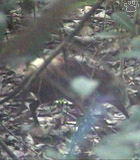 |
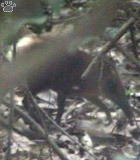 |
Black-backed elephant shrew, Uzambara Mountains
Forest Reserve, Tanzania. |
Yellow-rumped elephant shrew (Rh. chrysopygius),
Arabuko-Sokoke Forest Reserve, Kenya. |
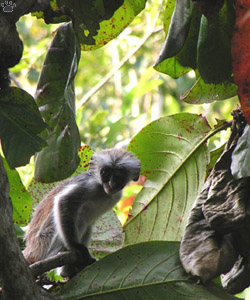
Zanzibar red colobus (Piliocolobus kirkii), Jozani Forest. |
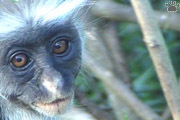
Zanzibar red colobus, Jozani Forest. |
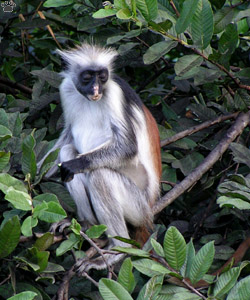
Zanzibar red colobus, Jozani Forest. |
|
Zanzibar red colobus is one of the world's rarest primates. |
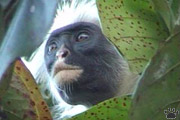
Zanzibar red colobus, Jozani Forest. |
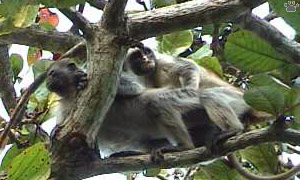
Zanzibar red colobus, Jozani Forest. |
These elf-like creatures do their best to avoid extinction, but they are now confined to one tiny forest surrounded by farmland. |
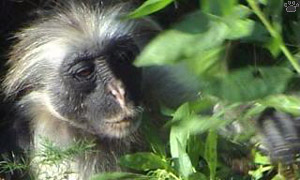
Zanzibar red colobus, Jozani Forest. |
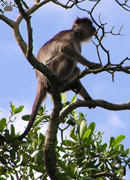
Grey-cheeked mangobey
(Cercocebus albigena), Kibale
Forest Nat'l Park, Uganda. |

Southern black-and white colobus
(Colobus angolensis), Udzungwa Mountains
National Park, Tanzania.
|
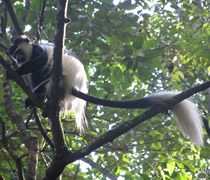
Northern black-and white colobus
(C. abyssinicus), Kakamega Forest
National Park, Kenya. |
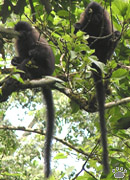
Grey-cheeked mangobeys,
Murchison Falls
Nat'l Park, Uganda. |
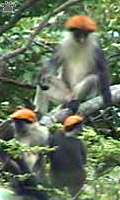
Red-capped red colobus,
Udzungwa Mts. Nat'l Park,
Tanzania. |
Red-capped red colobus (P. gondonorum) is closely related to Zanzibar red colobus, and also endangered. These beautiful monkeys of Tanzania's Eastern Ark Mountains remind me of aspen bolete mushrooms (Leccinum insigne). There are many species of colobus monkeys in Africa, including black-and-white colobus (above). The most impressive is Mount Kenya colobus (C. abyssinicus kikuyensis), with very long hair and wonderfully bushy all-white tail. Another very colorful group of East African monkeys are seven species of guenons (Cercopithecus). I wish I had some photos of them, but I don't. They are extremely agile and very difficult to photograph in the canopy, and my videocamera was broken by the time I got to Uganda, Rwanda, DR Congo and Western Kenya, where most of them occur. I only got some mangobeys (above). |
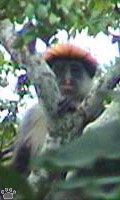
Red-capped red colobus,
Udzungwa Mountains,
Tanzania. |
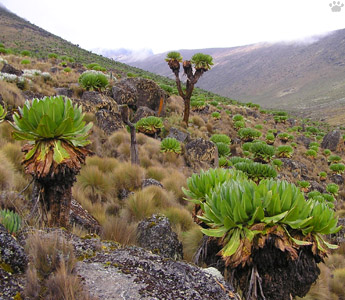
Giant groundsels (Senecio keniodendron), Mount Kenya. |
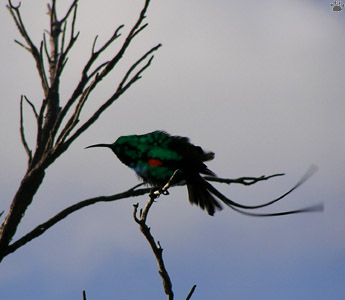
Malachite sunbird (Nectarinia johnstoni), Mount Kenya. |
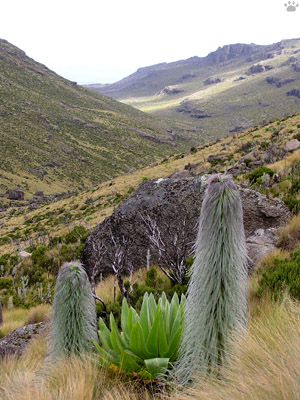
Telek's giant lobelias (Lobelia telekii), Mount Kenya. |
The highest peaks of East Africa are a world apart. To get there, you have to overcome or avoid altitude sickness, frostbite, and murderous park entrance fees. Mount Kenya (5199 m) has the most diversity, and is the easiest one to climb. |
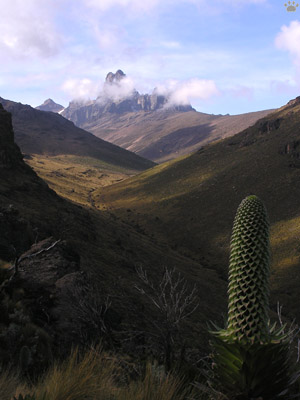
Decken's giant lobelia (L. deckeni) below the summit of Mount Kenya. |

Beautiful sunbird (N. pulchella), Murchison Falls National Park, Uganda.
Back to Part 3
Home
|